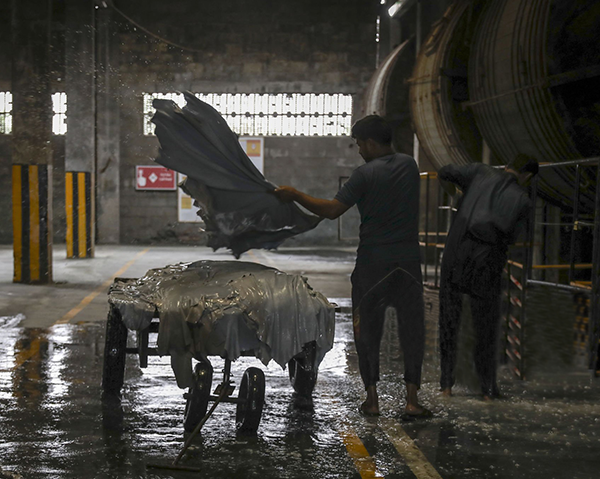Dyeing is one of the defining stages in Iran’s leather industry, giving leather its visual identity and unique character. This process not only enhances the aesthetic appeal of leather but also has a direct impact on texture, softness, durability, and the overall quality of the final product.
After tanning and shaving, hides enter the dyeing stage. In this process, leathers are placed in large wooden or stainless-steel drums and immersed in a special solution containing water, specialized dyes, oils, and resins. The slow rotation of the drum ensures that the dye penetrates deeply and evenly throughout the leather fibers. Depending on the desired final look and type of product, different dyes can be used: Aniline for transparency and preservation of the natural grain, Semi-Aniline for a balance between transparency and protective coating, or Pigmented for solid, uniform, and fully covering colors. Oils and resins also play an important role at this stage, contributing to softness, flexibility, and improved tensile strength of the leather.
In Iranian tanneries and workshops, dyeing is a highly controlled and customized process. Parameters such as temperature, pH, drum rotation speed, and dye concentration are carefully adjusted to guarantee uniformity, depth, and color fastness. To meet the diverse needs of the market, several dyeing methods are applied, including drum dyeing, spray dyeing, and dip dyeing. Among these, drum dyeing is the most widely used, as it allows complete penetration of color into the fibers and ensures greater durability of the finish.
At the end of the dyeing stage, the leather is fully drained and prepared for drying. At this point, it has not only acquired its final color and appearance but also the softness and flexibility required for subsequent operations such as surface finishing, embossing, or laminating. A professionally executed dyeing process significantly enhances the beauty, tactile quality, and longevity of the leather product.
Key characteristics of the dyeing process in Iran’s leather industry:
- Even color penetration into the fiber depth using drum dyeing systems
- Application of water-based dyes, oils, and resins for softness and durability
- Precise adjustment of tone and finish according to product requirements
- Improvement of softness, flexibility, and natural leather texture
- Preparation of leather for final drying and finishing stages


No comments yet.